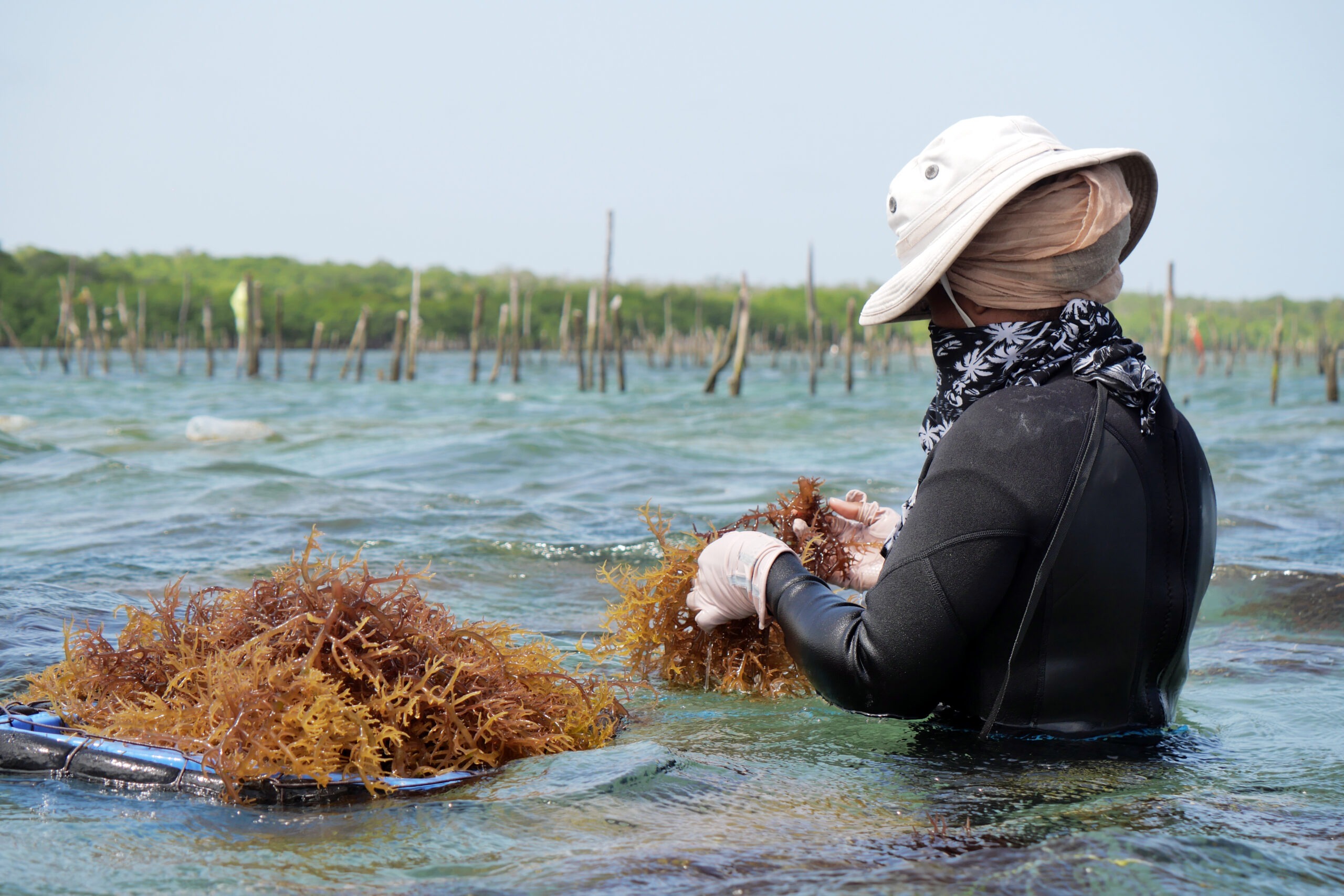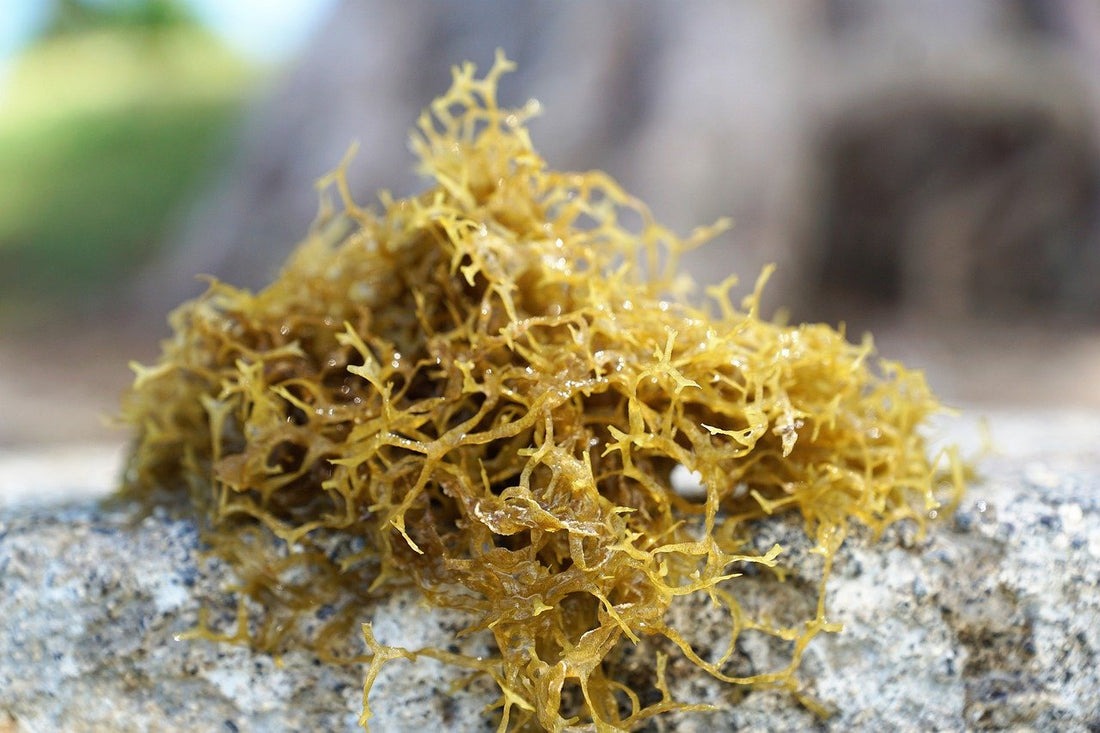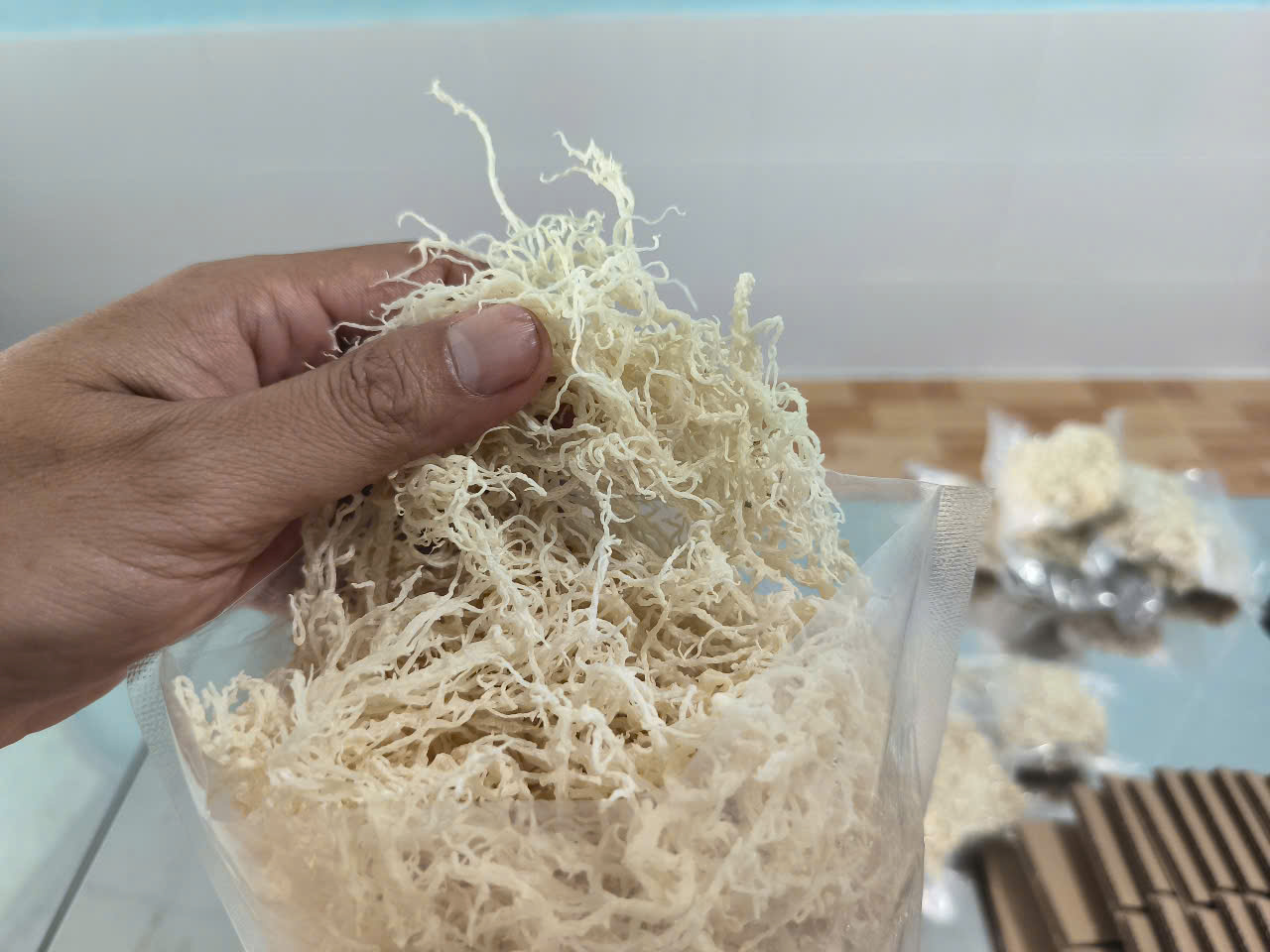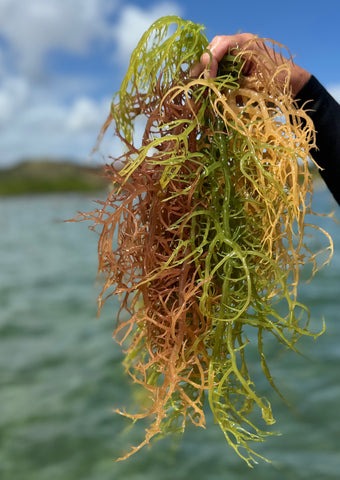In recent years, sea moss in cosmetics has emerged as a prominent trend in the skincare and beauty industry. This natural raw material is highly valued not only for its nutritional profile but also for its ability to generate bioactive compounds that meet high-end cosmeceutical standards.
But does sea moss truly deliver exceptional benefits compared to the traditional ingredients that companies have long used in cosmetics production? What are the standout advantages of this ingredient? Let’s explore below.
1. Biological benefits of sea moss in cosmetics – and quality comparison across sources
1.1 Outstanding biological benefits
Sea moss (Eucheuma and Kappaphycus) is a raw material rich in natural nutrients, particularly pharmaceutical grade carrageenan – a polysaccharide with the ability to:
- Deep moisturization and long-lasting hydration: Carrageenan forms a thin moisture-retaining film on the skin’s surface, helping to maintain moisture up to 5–6 times its own weight.
- Soothing and skin restoration: Reduces irritation and redness, while supporting the recovery of the natural skin barrier.
- Antioxidant and anti-aging effects: In synergy with minerals such as iodine, calcium, and magnesium, carrageenan helps neutralize free radicals and protect the skin from UV damage and pollution.
- Product structure stabilization: Used in sea moss-based excipients to provide viscosity and stability for creams, serums, and masks without relying on synthetic additives.

Sea moss farm at Lam Hong
1.2 Comparison of Vietnamese sea moss with other sources
|
Criteria |
Vietnamese Sea Moss |
Philippines |
Indonesia |
|
Carrageenan content |
35–40% (high, stable) |
32–36% |
30–34% |
|
Raw material purity |
Low impurities, suitable for processing pharmaceutical grade carrageenan |
Good, but less uniformity |
Often mixed with sand and impurities due to harvesting methods |
|
Minerals & trace elements |
Rich in iodine, calcium, zinc – ideal for skincare and recovery products |
Good mineral content but lower iodine |
Diverse minerals but inconsistent |
|
Supply capability |
Year-round production, minimal seasonal dependency, control cultivation |
Distinct harvesting seasons, fluctuating yield |
Large output but quality varies seasonally |
|
Color & scent stability |
Mild scent, bright color – suitable for premium cosmetics |
Slightly darker, stronger scent |
Requires more deodorizing treatment |
Remarks:
- Vietnamese sea moss stands out for its high carrageenan content, mild scent, and stable purity, making it highly suitable for premium cosmetics production and sea moss for capsule coating in beauty-oriented nutraceuticals.
- While the Philippines and Indonesia offer large volumes, their raw material quality often requires more processing to meet pharmaceutical grade standards.
2. Significance for the cosmetics industry
The use of Vietnamese sea moss offers cosmetic manufacturers to:
- Reduce raw material processing costs and shorten production timelines.
- Easily achieve medical grade carrageenan ingredients standards for cosmeceutical applications.
- Build a brand associated with sustainable, eco-friendly raw material sourcing.

Fresh sea moss products at Lam Hong
3. Application of sea moss technology in skincare
Sea moss-based excipients are natural ingredients rich in carrageenan – a polysaccharide that forms gels, retains moisture, and stabilizes product texture. Thanks to these properties, carrageenan has become a strategic raw material in premium skincare and dermatological treatment.
3.1 Premium moisturizing masks
- Combination technology: Carrageenan extracted from sea moss is blended with herbal extracts (green tea, aloe vera, ginseng) to create a smooth gel that adheres to the skin surface like a natural “biofilm”.
- Biological efficacy: When the gel closely conforms to the skin, moisture and nutrients are retained for longer, allowing for maximum absorption. Clinical trials have shown that carrageenan can increase skin hydration retention by up to 23% compared to conventional masks.
- Comparison with synthetic materials: While synthetic polymers such as polyvinyl alcohol can form films, they tend to clog pores and are less biodegradable, whereas carrageenan is completely natural and eco-friendly.
3.2 Regenerative cream
- Role in formulation: Serves as a natural thickener, maintaining cream consistency without chemical stabilizers such as carbomer.
- Advantages for sensitive skin: Its purity and minerals-rich marine origin, lower irritation risks, making it suitable for sensitive skin.
- Efficacy: When combined with regenerative actives such as panthenol or ceramide, carrageenan enhances the effectiveness of restoring the skin’s protective barrier after damage.

Processed sea moss products at Lam Hong
3.3 Anti-aging serum
- Mechanism of action: Carrageenan creates an ultra-thin gel matrix that evenly disperses vitamin C, peptides, and antioxidants evenly across the skin surface, thereby improving absorption.
- Additional benefits: Beyond its delivery capability, carrageenan also contains small amounts of polyphenols and minerals, further supporting antioxidant activity.
- Research findings: Serums formulated with carrageenan maintain vitamin C stability 18–22% longer compared to serums without carrageenan.
3.4 Applications in cosmeceuticals
In the medical-grade carrageenan ingredients segment, cosmeceutical companies utilize sea moss to develop skin treatment and recovery products, such as:
- Gel for mild burn treatment: Carrageenan creates a moist environment that helps reduce transepidermal water loss and promotes epidermal regeneration.
- Post-laser recovery products: Combining carrageenan with restorative peptides to reduce redness and accelerate the regeneration process.
- Anti-inflammatory creams: Using carrageenan in combination with licorice extract or bisabolol to alleviate inflammatory responses without the need for corticosteroids.

Close-up of freshly harvested sea moss products at Lam Hong
4. Potential in capsule and beauty nutraceutical production
Beyond topical cosmetics, sea moss is also used in beauty supplements that work from within. Sea moss for capsule coating serves as a plant-based alternative to animal-derived gelatin, providing a durable, safe, and vegetarian-friendly capsule shell.
Advantages:
- Complies with Halal and Kosher standards.
- Withstands a wide range of storage temperatures.
- Preserves the integrity of active ingredients inside the capsule.
5. Development trends
According to forecasts by Global Market Insights, the sea moss in cosmetics market is expected to grow by more than 6% annually through 2030, driven by the demand for natural and safe beauty products. Major brands are gradually shifting towards Sea moss-based excipients and medical grade carrageenan ingredients as alternatives to synthetic chemicals, while also expanding into ingestible beauty products.
Sea moss is no longer just a food ingredient – it is becoming a “rising star” in the cosmetics and skincare industry. With advantages in raw material availability and increasingly advanced processing technologies, Vietnam has the potential to become a hub for supplying pharmaceutical grade carrageenan and other sea moss-derived products to the global market.
6. Why choose Vietnamese businesses for your sea moss in cosmetics needs?
Vietnam has abundant sea moss resources rich in carrageenan, fully capable of supplying pharmaceutical grade carrageenan to global cosmetics and nutraceutical corporations. Advantages include:
- Stable climate allowing year-round production.
- Competitive costs compared to other countries in the region.
- Many enterprises have already certified with GMP, HACCP, and ISO, creating a strong foundation for exporting high-quality raw materials.
If you are looking for sea moss in cosmetics supplies in Vietnam, do not hesitate to contact Lam Hong to expand your sourcing options. Our company may not yet be the most prominent in the market, but we could be the right fit for your business scale and budget.






